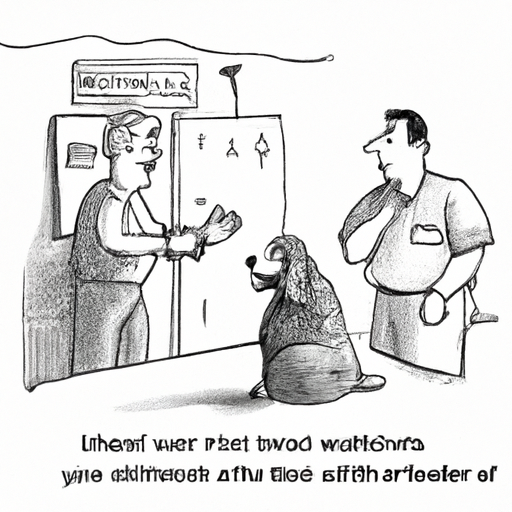Dog shedding is an inevitable part of owning a furry friend. While all dogs shed to some degree, the amount and frequency can vary greatly from breed to breed. But what if your pet’s shedding becomes a problem? Excessive shedding can lead to a multitude of issues, not only for your home but also for your dog’s health. Fortunately, there are ways to control and manage your dog’s shedding.
- Understanding Why Dogs Shed
- Regular Grooming: A Must for Controlling Shedding
- The Role of Nutrition in Shedding Control
- Keep Your Dog Hydrated
- The Importance of Regular Vet Check-Ups
- The Role of Dog Bedding in Shedding Control
- Frequently Asked Questions
Key Takeaways
- Shedding is a natural process for dogs, but excessive shedding can be a sign of underlying health issues.
- Regular grooming is essential in controlling shedding.
- A balanced diet and proper hydration can significantly reduce shedding.
- Regular vet check-ups can ensure your dog’s health and help identify any potential issues causing excessive shedding.
- Choosing the right dog bedding can also aid in shedding control.
Shedding is a natural part of a dog’s life. This process allows them to remove old, damaged, or excess hair. However, when shedding becomes excessive, it can be a sign of underlying health issues, such as allergies or skin conditions. Additionally, factors like season, diet, and general health can also affect the rate of shedding in dogs. Understanding why dogs shed can help you better manage this process. You can learn more about this in Understanding Your Dog’s Shedding.
Regular Grooming: A Must for Controlling Shedding
Regular grooming is one of the most effective ways to control shedding in dogs. This process includes brushing, bathing, and, if necessary, trimming your dog’s hair.
Brushing is essential as it removes loose hair and helps distribute natural oils that keep your dog’s coat healthy. The frequency of brushing will depend on your dog’s breed and hair type. Some dogs may require daily brushing, while others may only need it once a week.
Bathing your dog can also help remove loose hair. However, it’s essential not to overdo it as excessive bathing can lead to dry skin, which can cause more shedding. Always use a dog-specific shampoo and conditioner that can help moisturize the skin and reduce shedding.
In some cases, trimming your dog’s hair can also help control shedding. This is particularly true for breeds with long hair. However, trimming should always be done by a professional groomer to avoid any potential injuries.
The Role of Nutrition in Shedding Control
A dog’s diet plays an essential role in their overall health and, consequently, their shedding. Feeding your dog a balanced, high-quality diet can significantly reduce shedding. Foods rich in omega-3 and omega-6 fatty acids, such as salmon and flaxseed, can promote healthy skin and coat, reducing shedding.
Moreover, some dog foods are specifically designed to address excessive shedding. These foods often contain higher levels of essential fatty acids and other nutrients that promote skin and coat health. For more information on dog nutrition, check out this post on Top 10 Best Dog Foods for Shedding.
Keep Your Dog Hydrated
Hydration is another crucial factor in controlling shedding. Just like humans, dogs’ bodies are mostly made up of water. When they’re dehydrated, their skin can become dry and itchy, leading to increased shedding. Therefore, always ensure your dog has access to fresh, clean water.
The Importance of Regular Vet Check-Ups
Regular vet check-ups are an essential part of maintaining your dog’s health and controlling shedding. Your vet can identify any potential health issues that may be causing excessive shedding and provide appropriate treatments. Regular vet visits can also ensure your dog is up-to-date on vaccinations and other preventative care, which can also contribute to a healthier coat. To learn more about the importance of vet check-ups, visit Vet Check-Ups: What to Expect.
The Role of Dog Bedding in Shedding Control
The right dog bedding can also aid in shedding control. Some materials can help reduce the amount of hair that sticks to them, making cleaning easier. Additionally, some beds are designed with hypoallergenic materials that can reduce skin irritations and, in turn, shedding. For more information on choosing the right dog bed, refer to Choosing the Perfect Dog Bed.
Frequently Asked Questions
1. Why is my dog shedding excessively?
Excessive shedding can be due to various factors, such as nutritional deficiencies, allergies, stress, or underlying health issues. If your dog’s shedding seems excessive or sudden, it’s best to consult with a vet.
2. Can I stop my dog from shedding?
Completely stopping a dog from shedding is impossible as it’s a natural process. However, you can control and reduce the amount of shedding through regular grooming, proper nutrition, and regular vet check-ups.
3. What foods can help reduce shedding?
Foods rich in omega-3 and omega-6 fatty acids, such as salmon, flaxseed, and certain vegetables, can help promote healthy skin and coat, reducing shedding.
The journey to controlling your dog’s shedding is not a quick one, but with consistent efforts and the right strategies, it’s entirely possible. Remember, the key lies in regular grooming, a balanced diet, proper hydration, regular vet check-ups, and the right dog bedding. By understanding and addressing the root causes of shedding, you can ensure a healthier and happier life for your furry friend.



